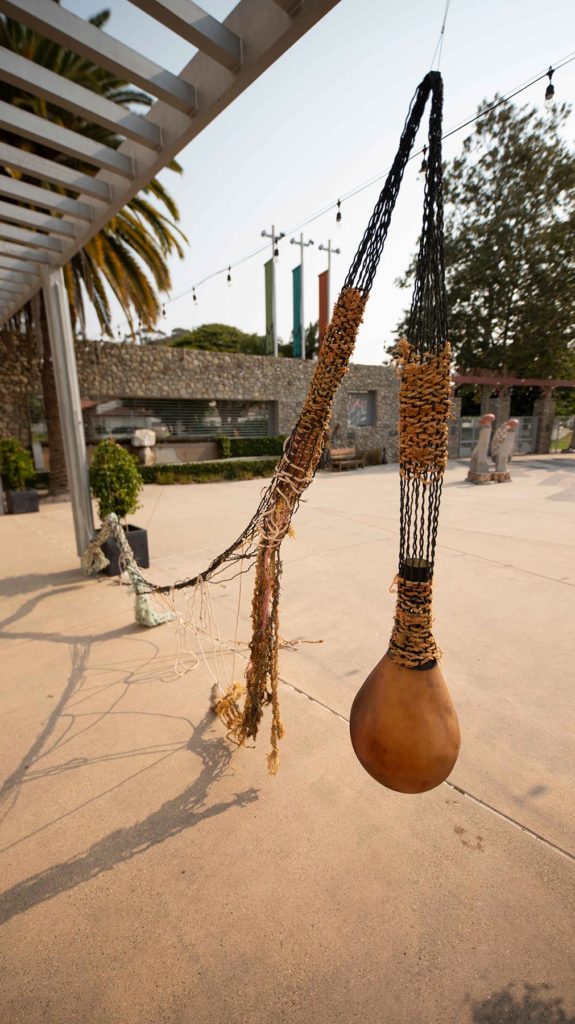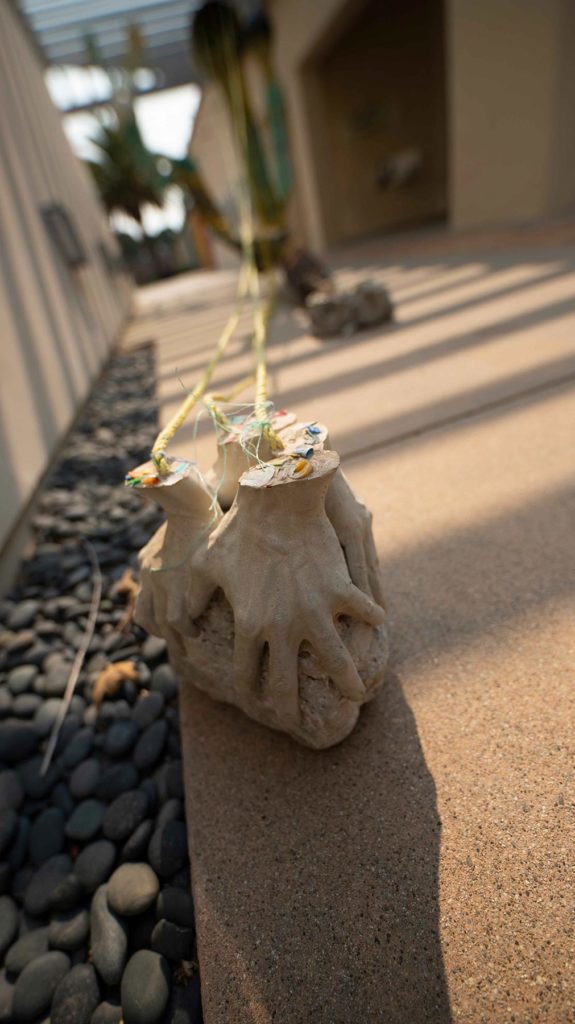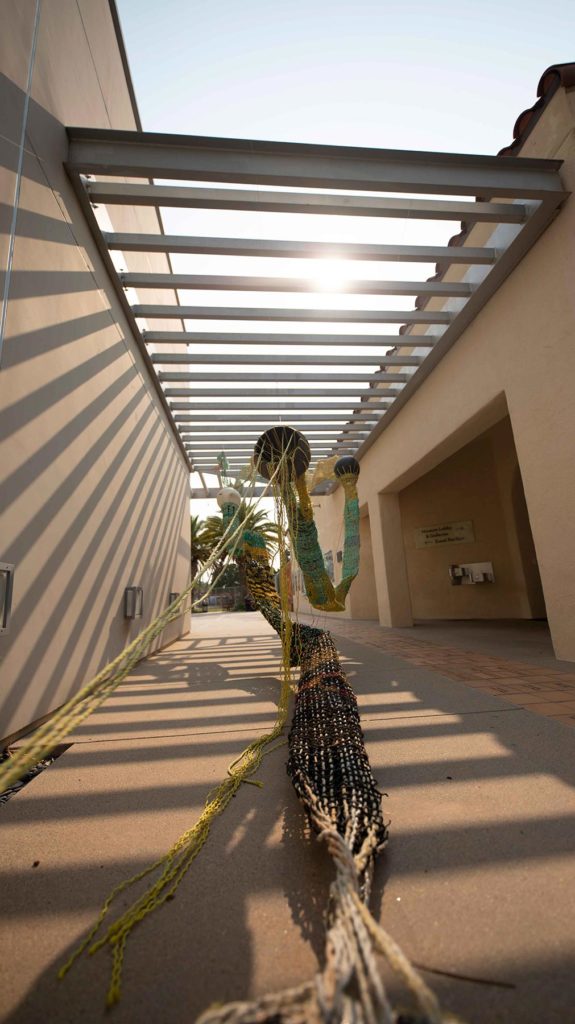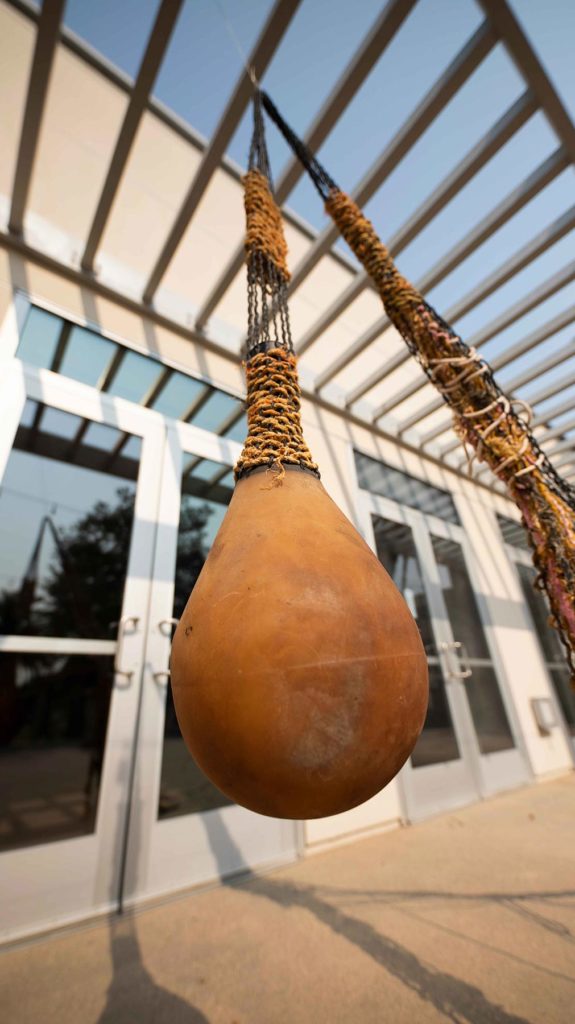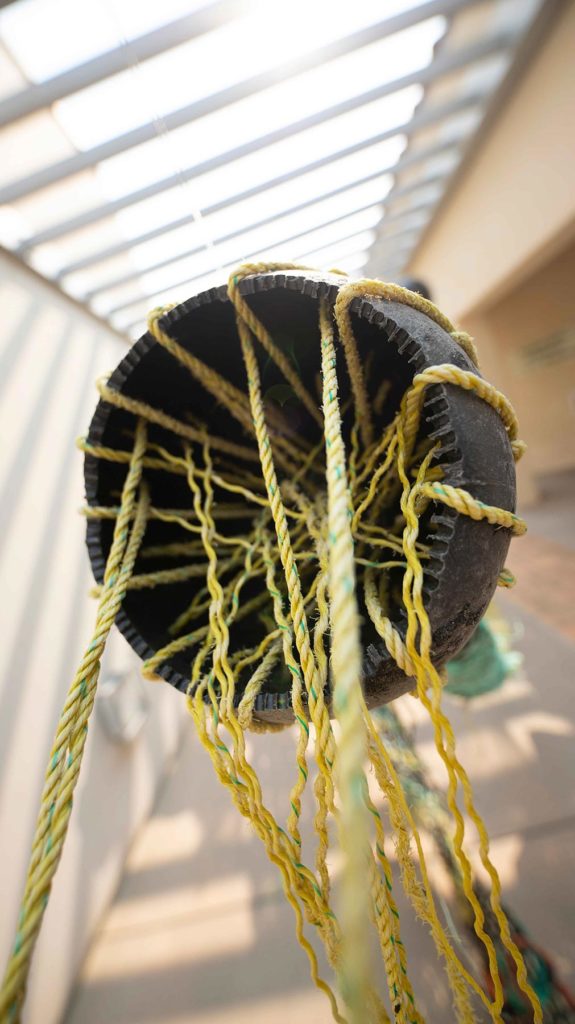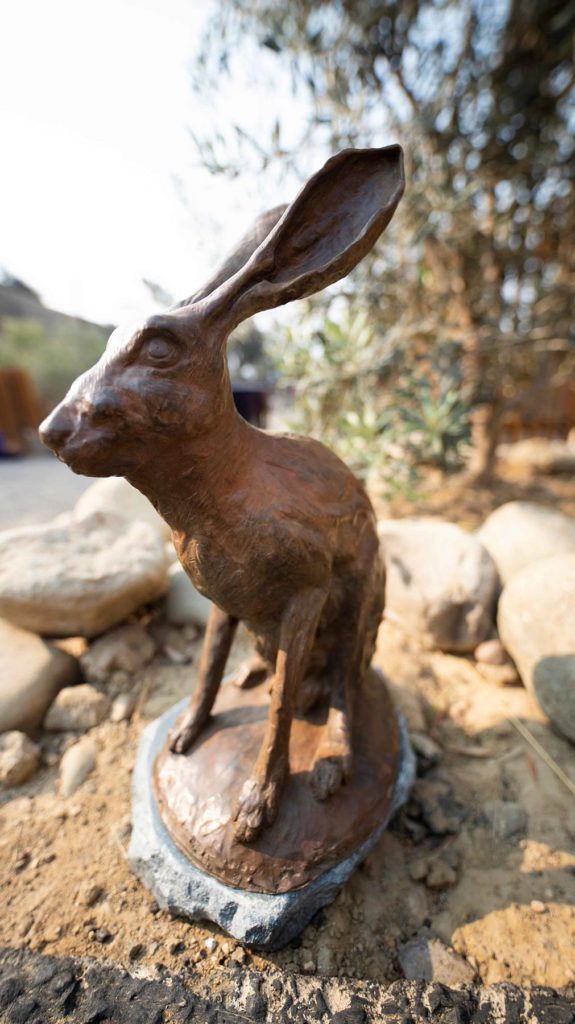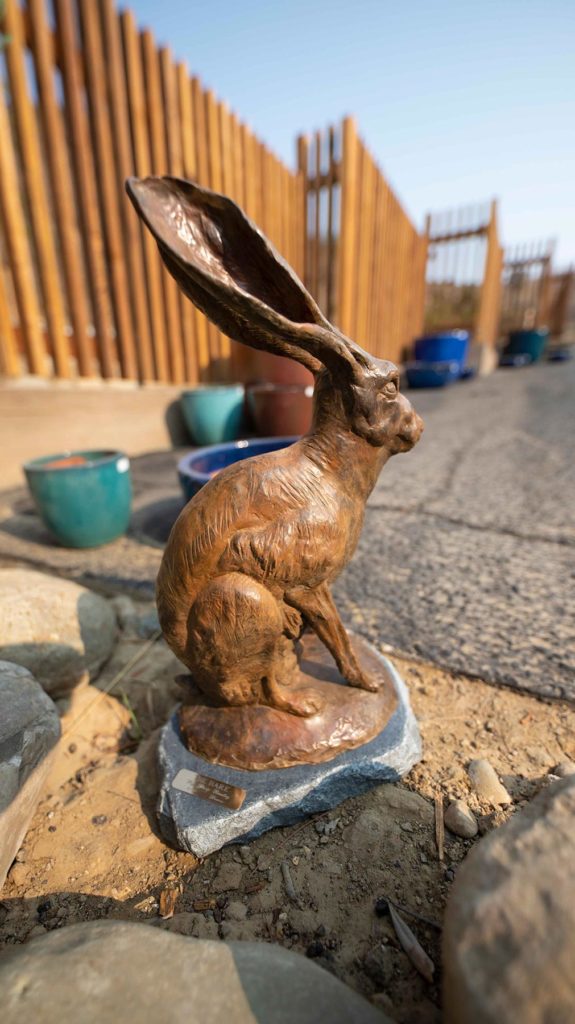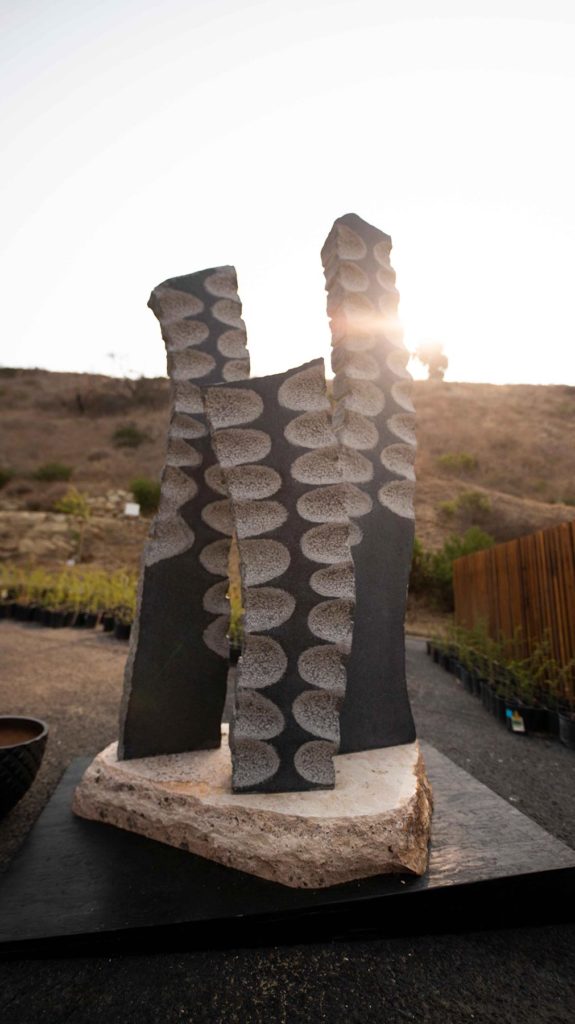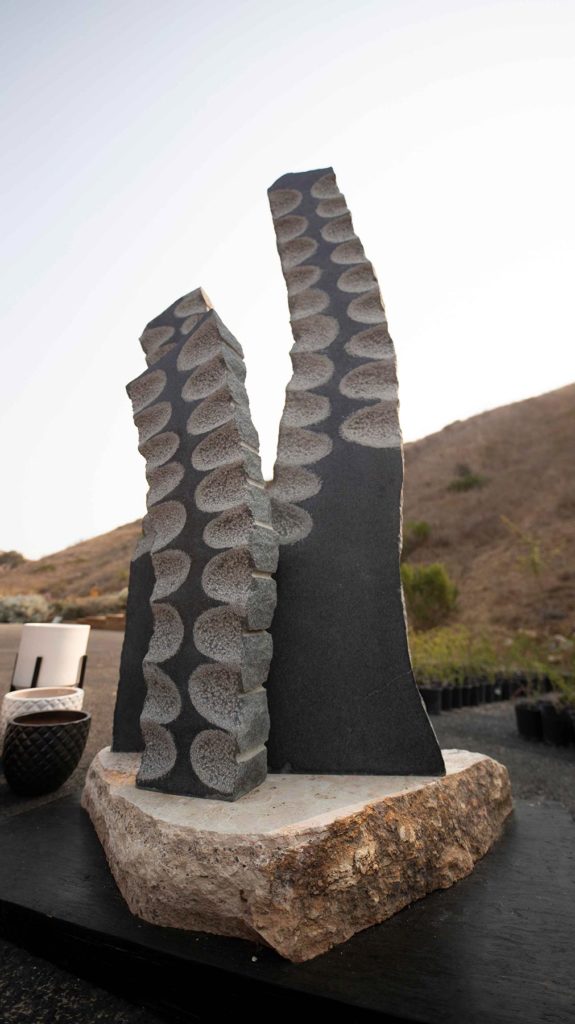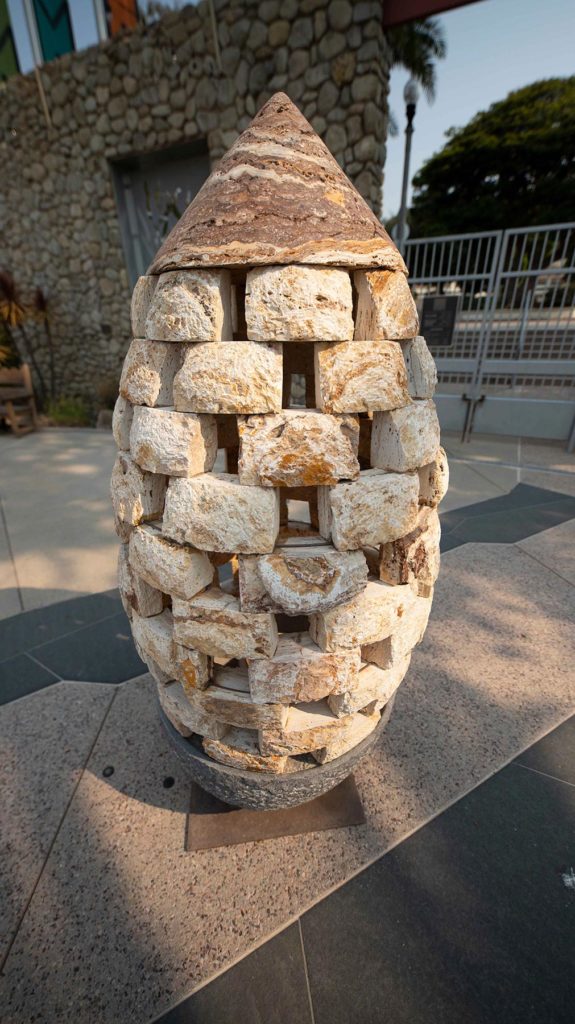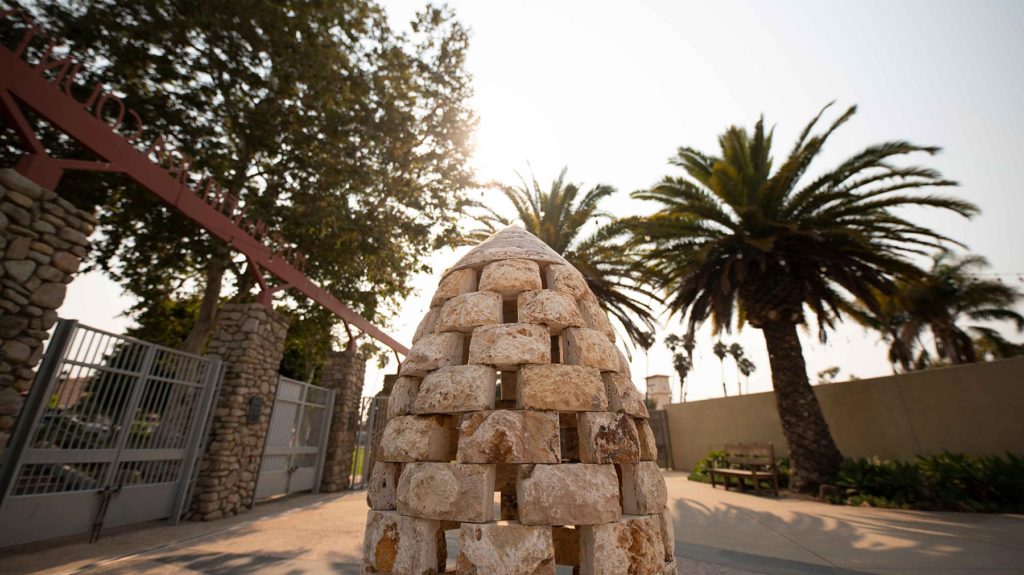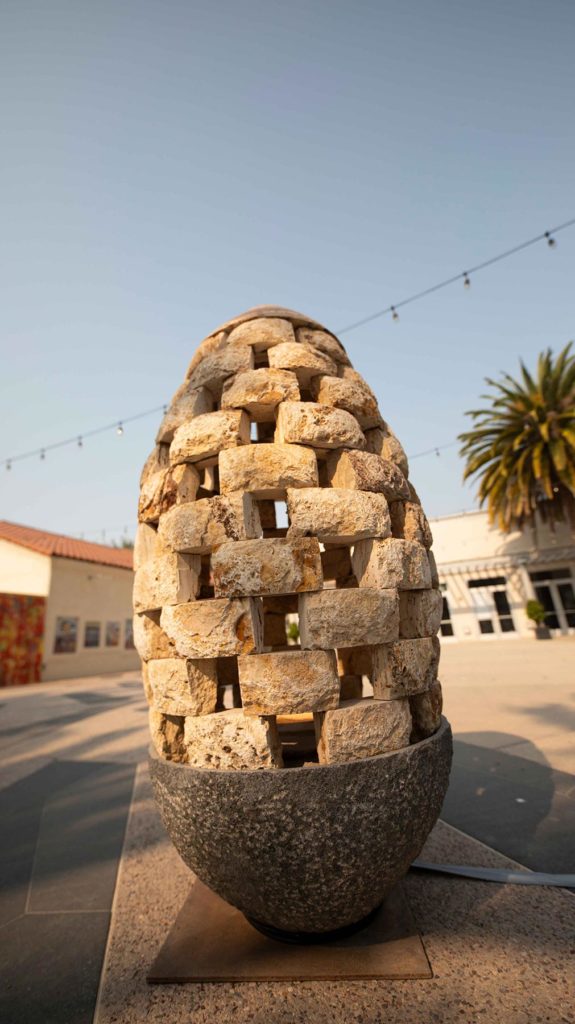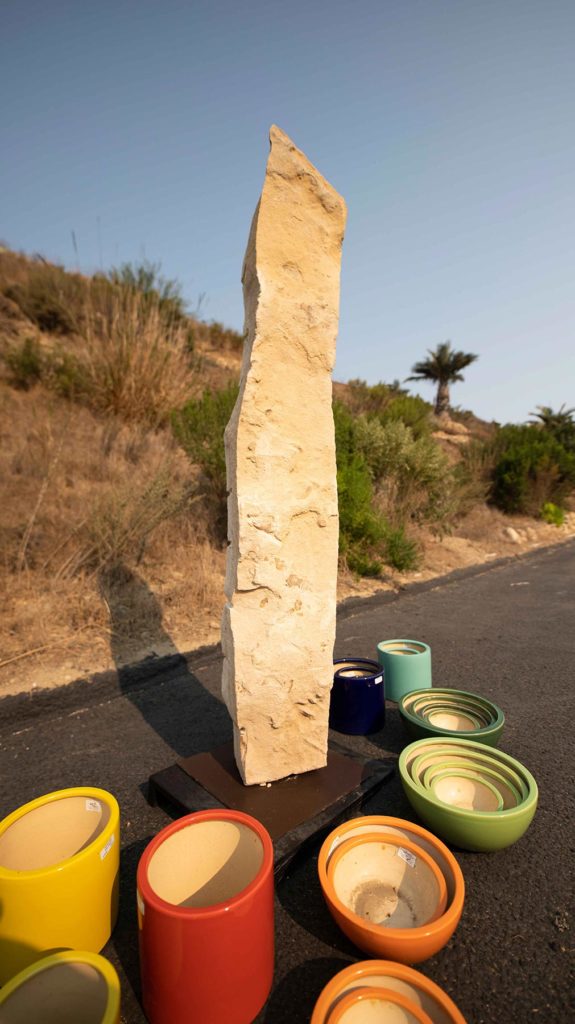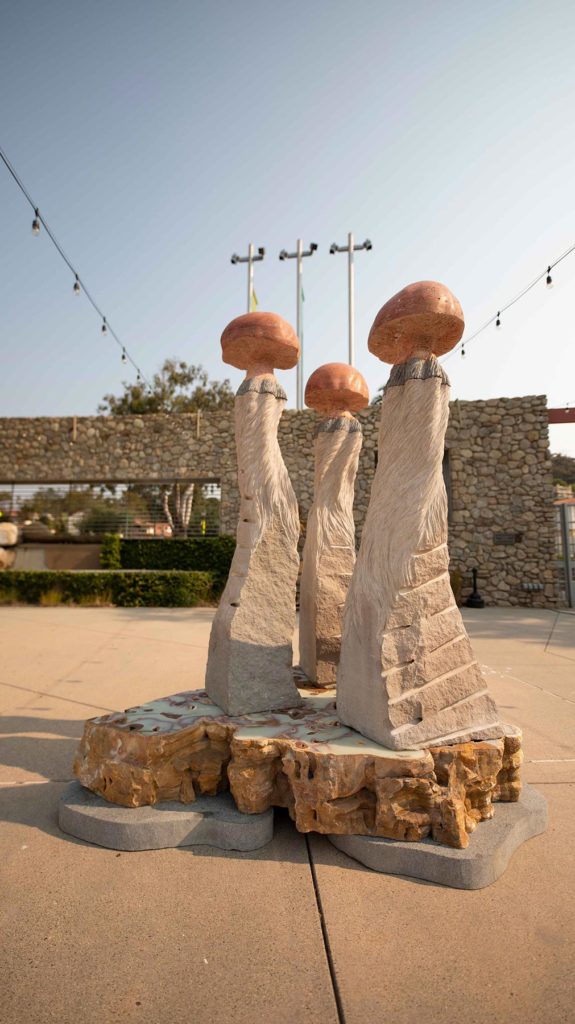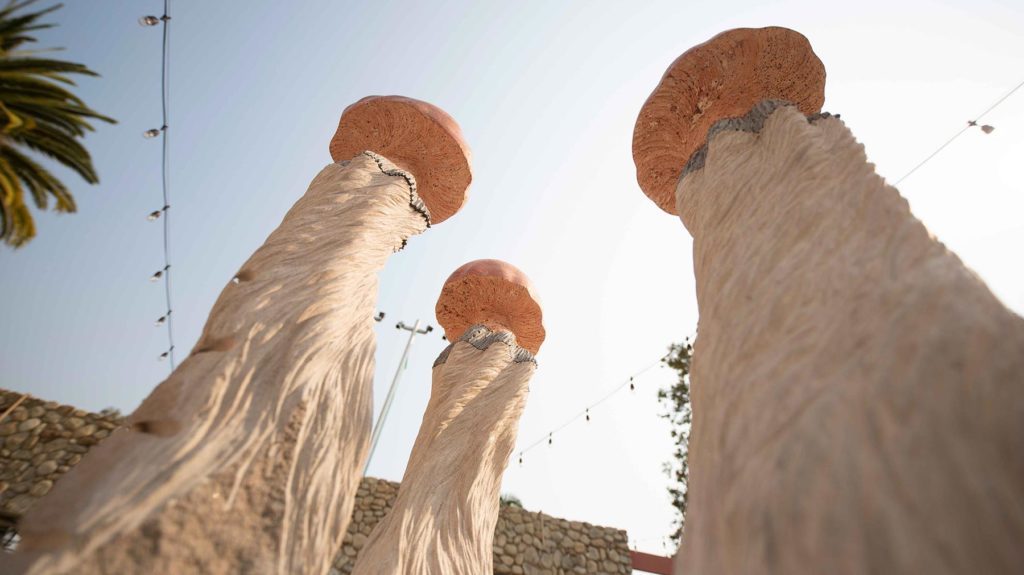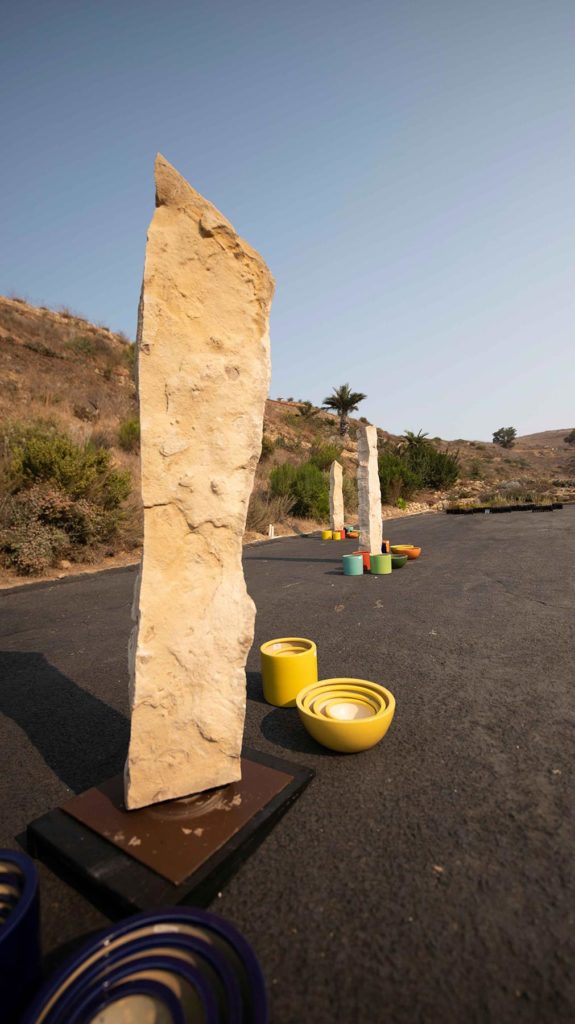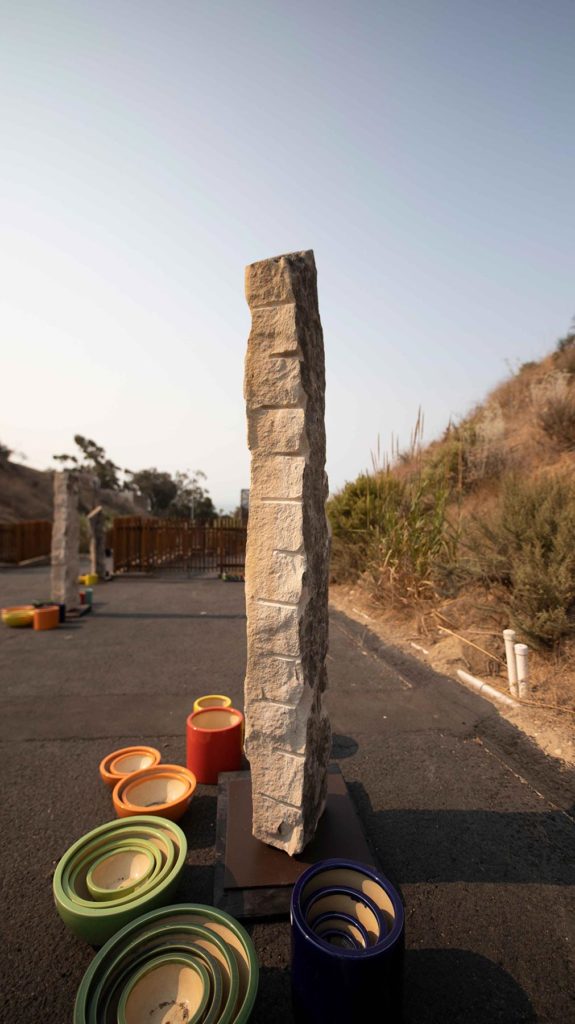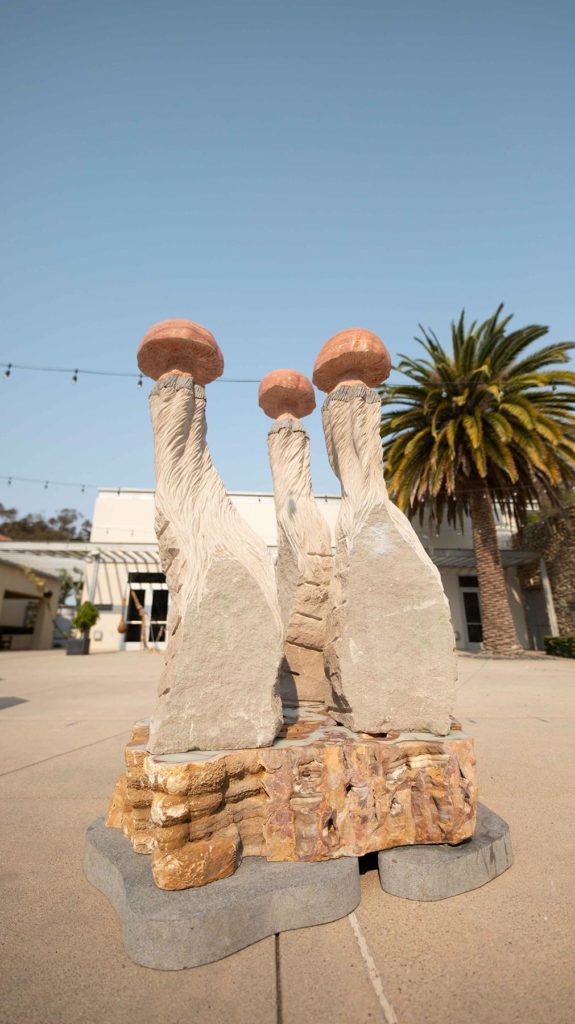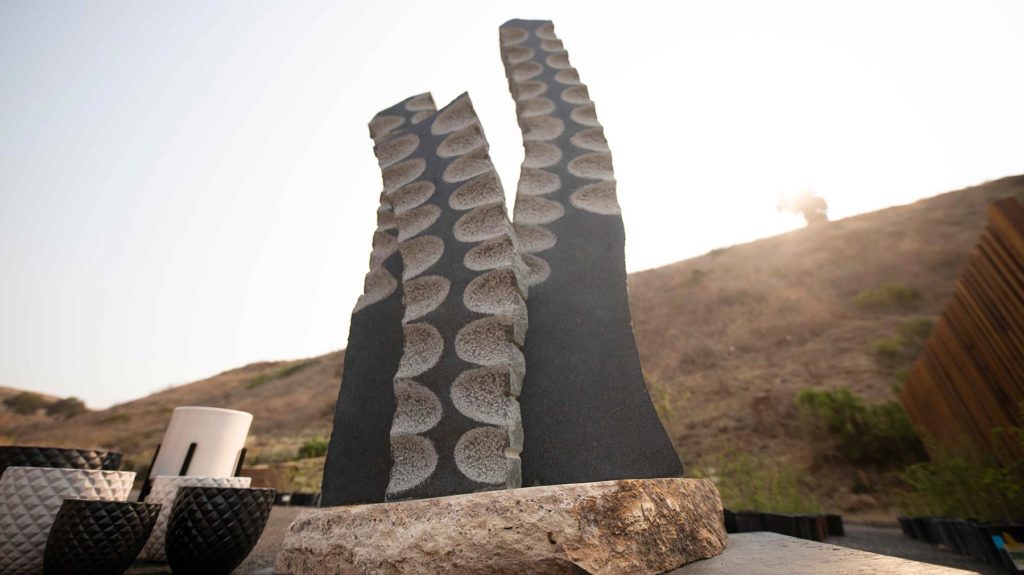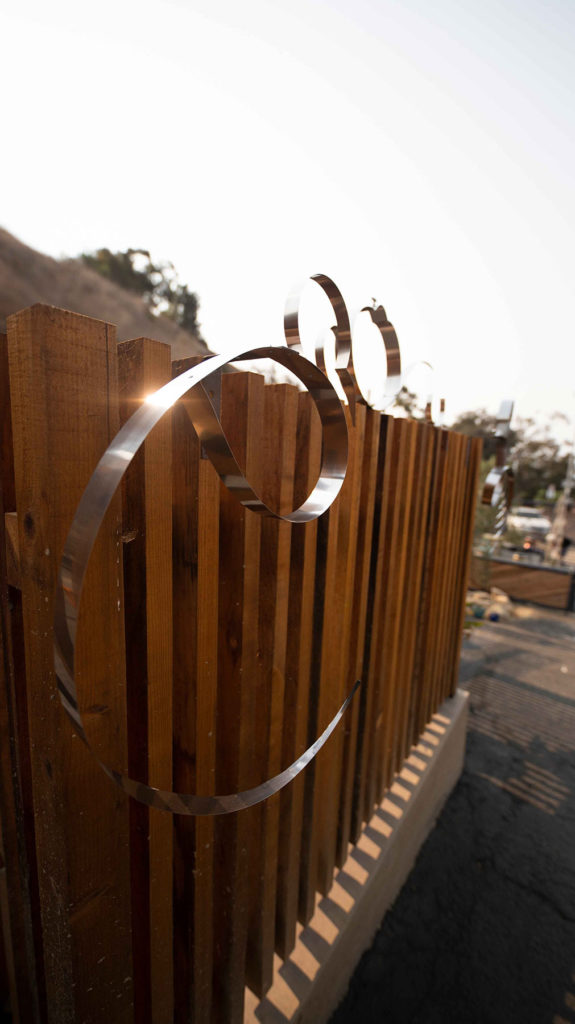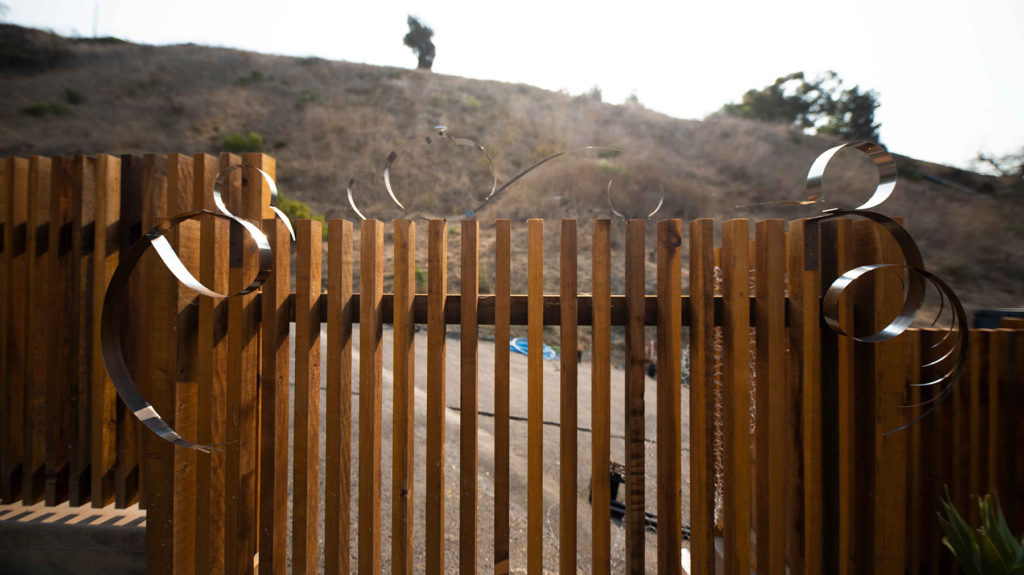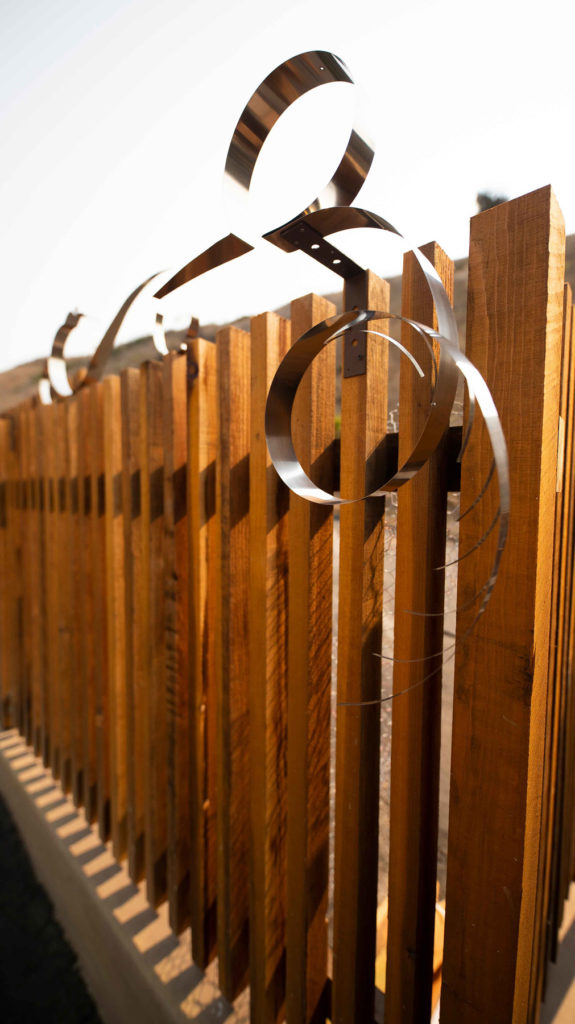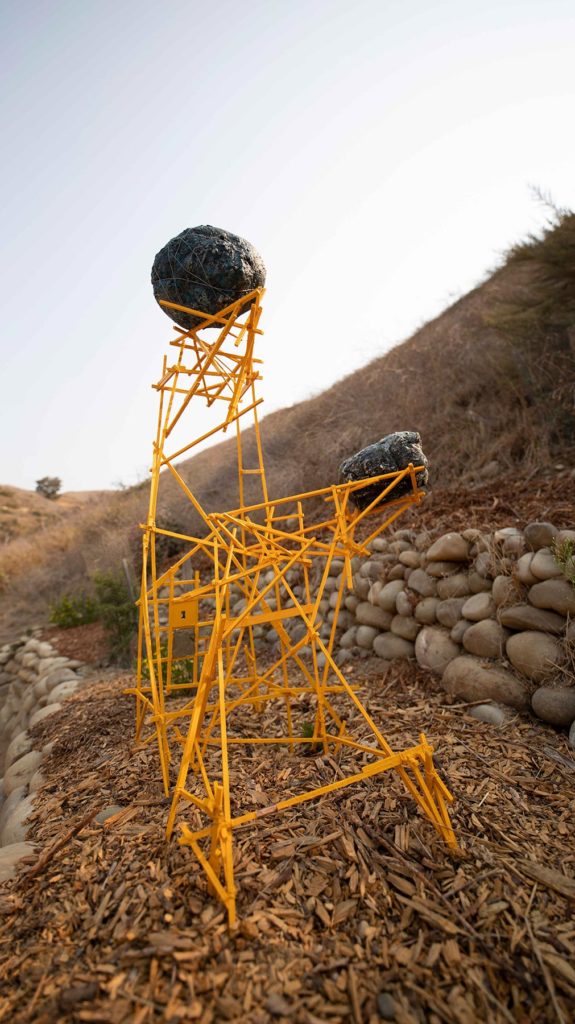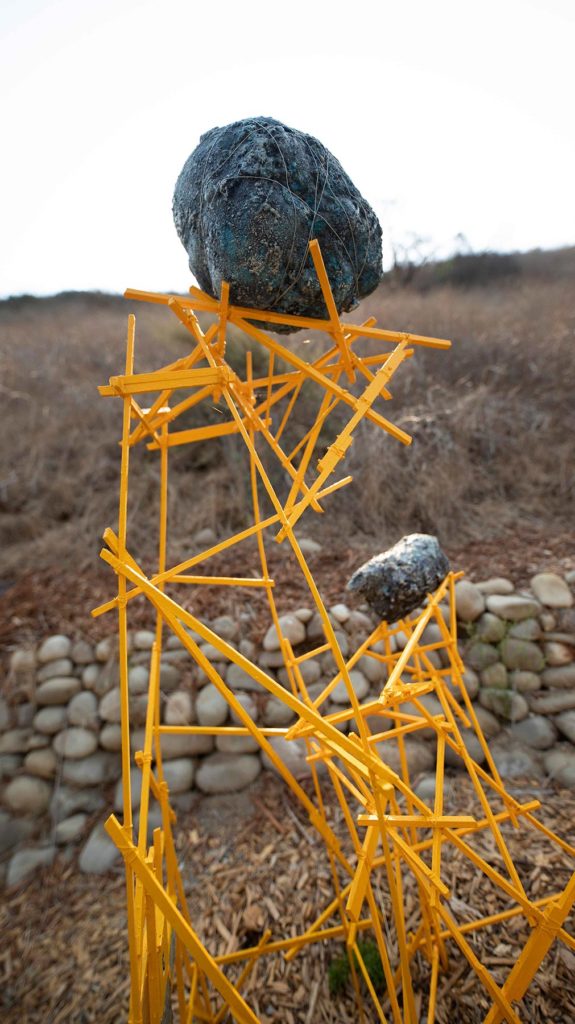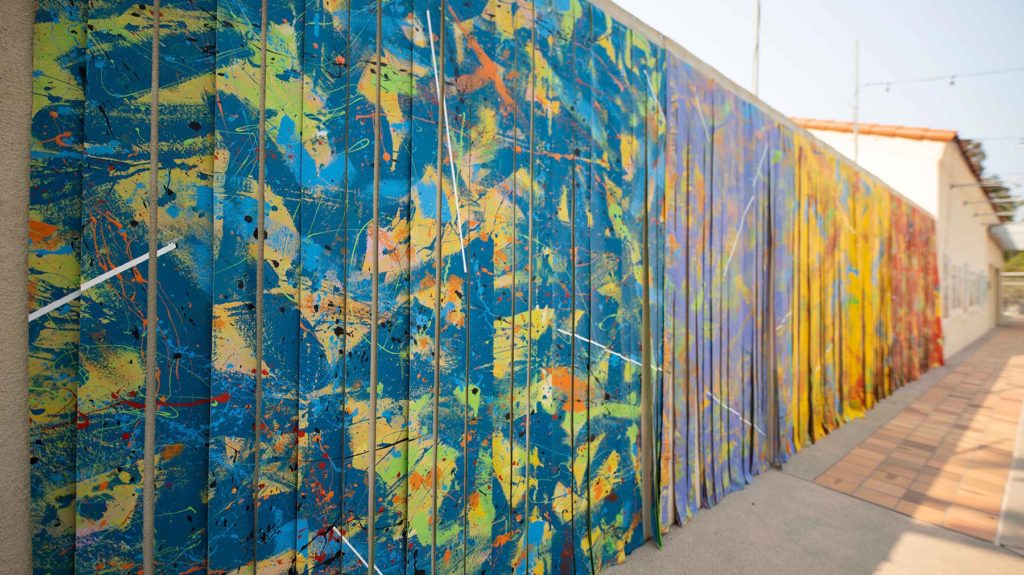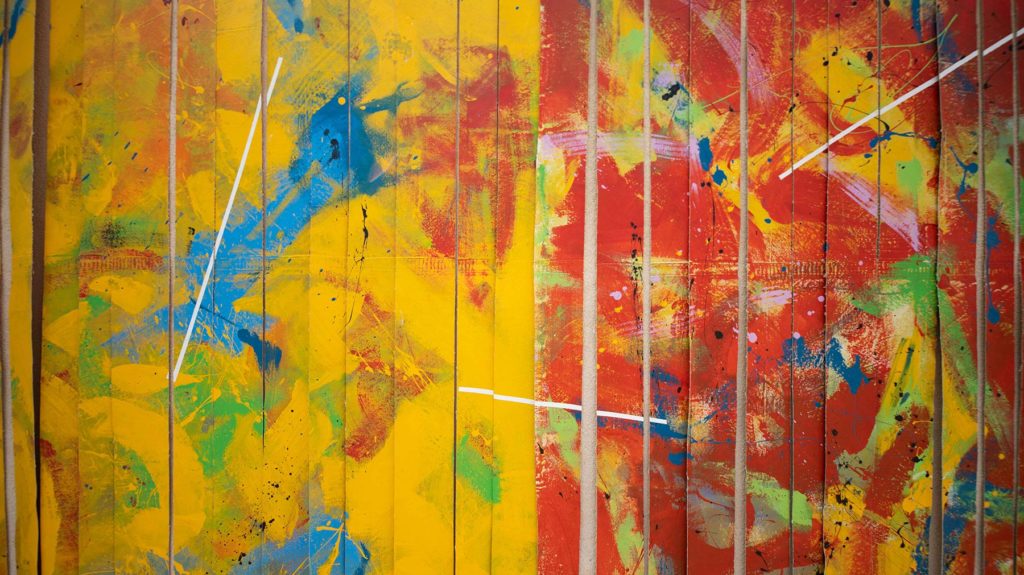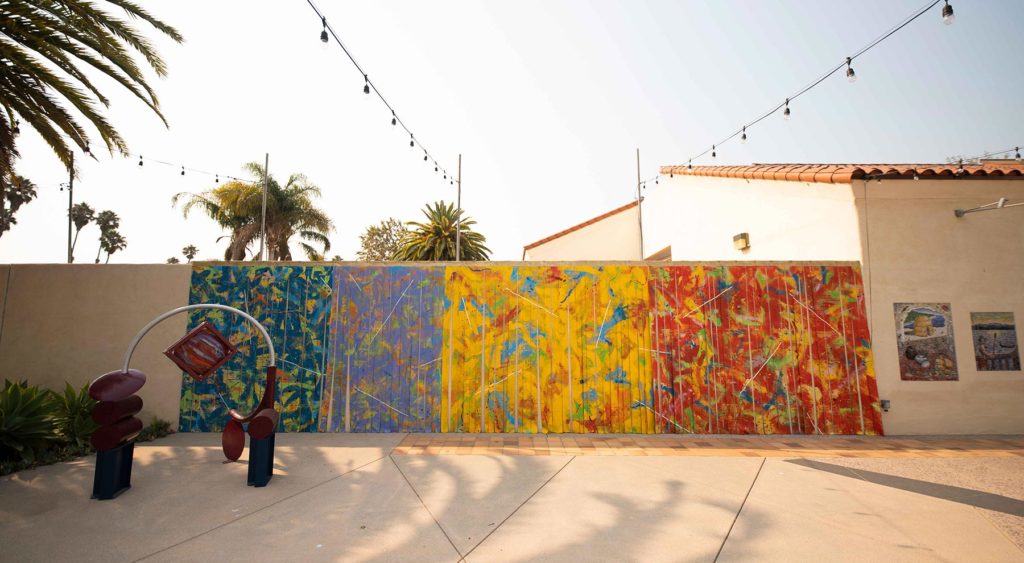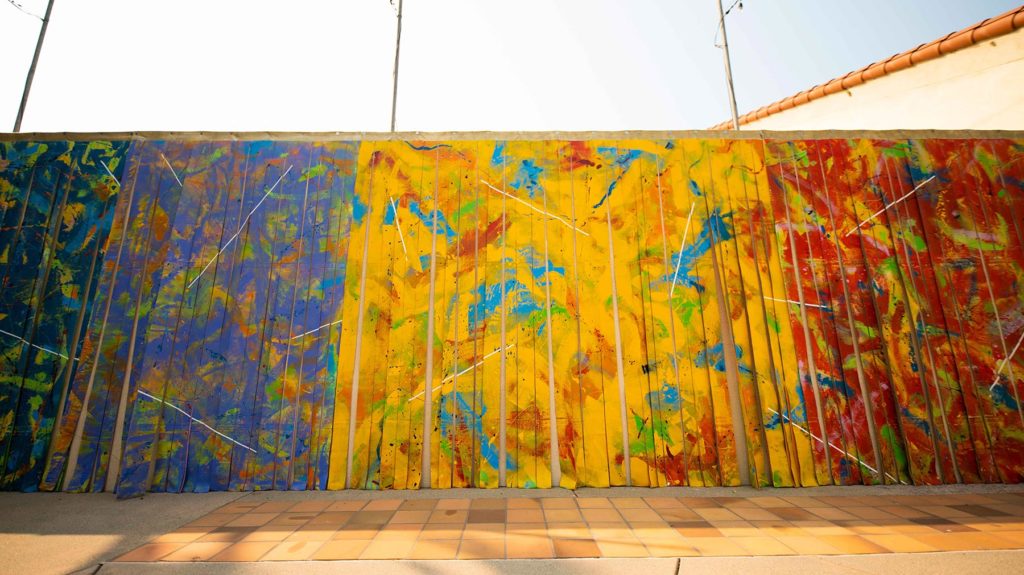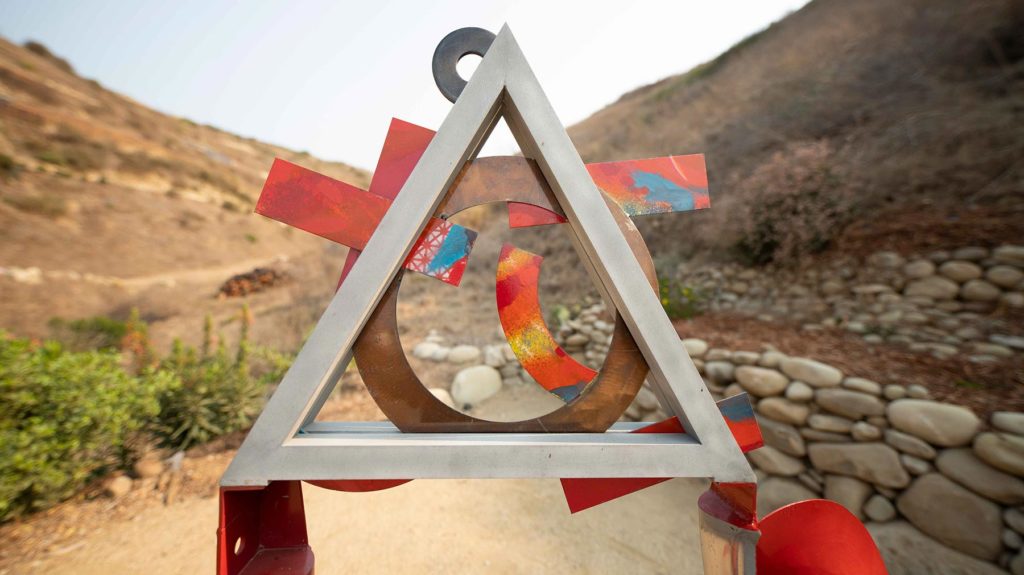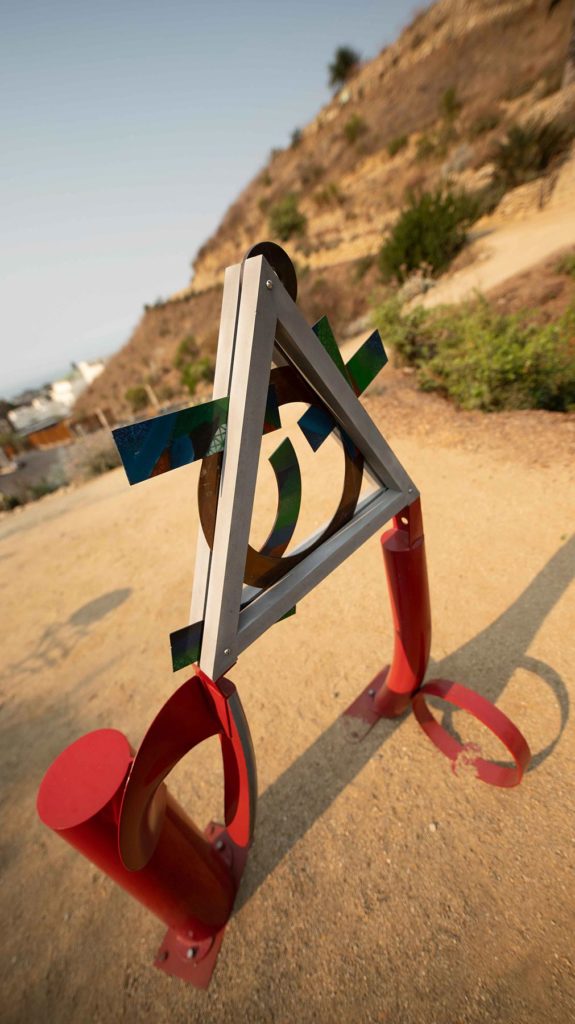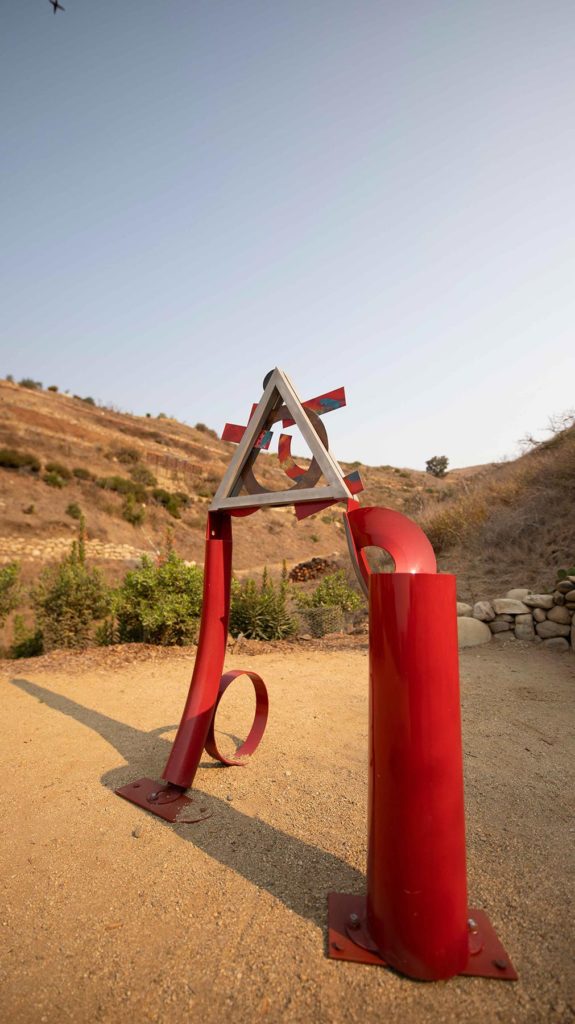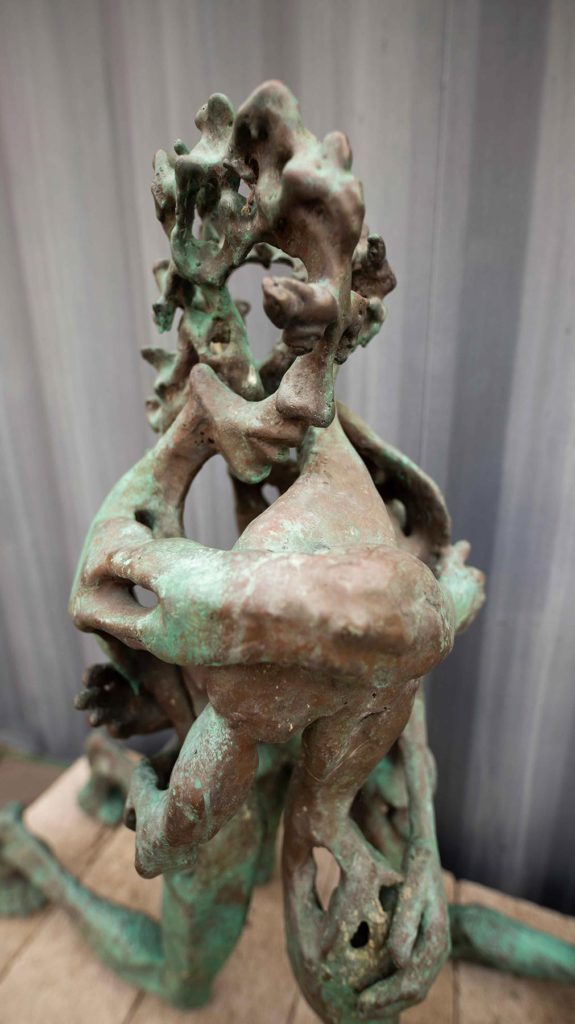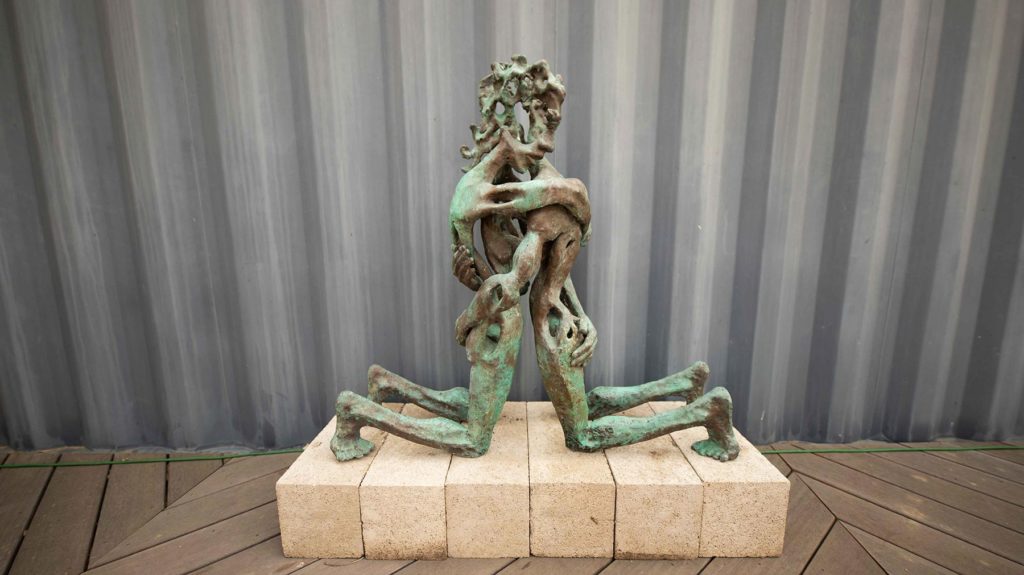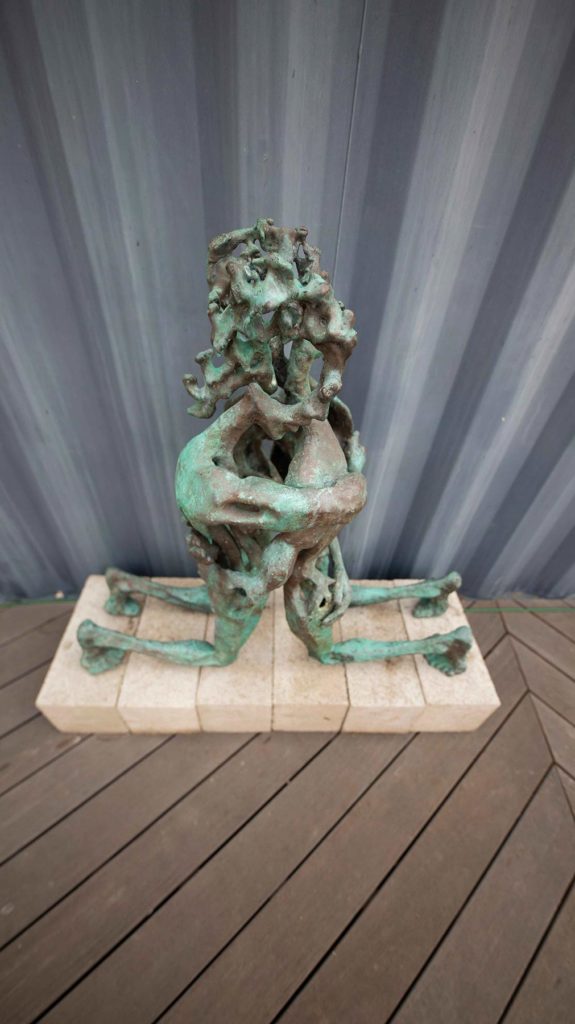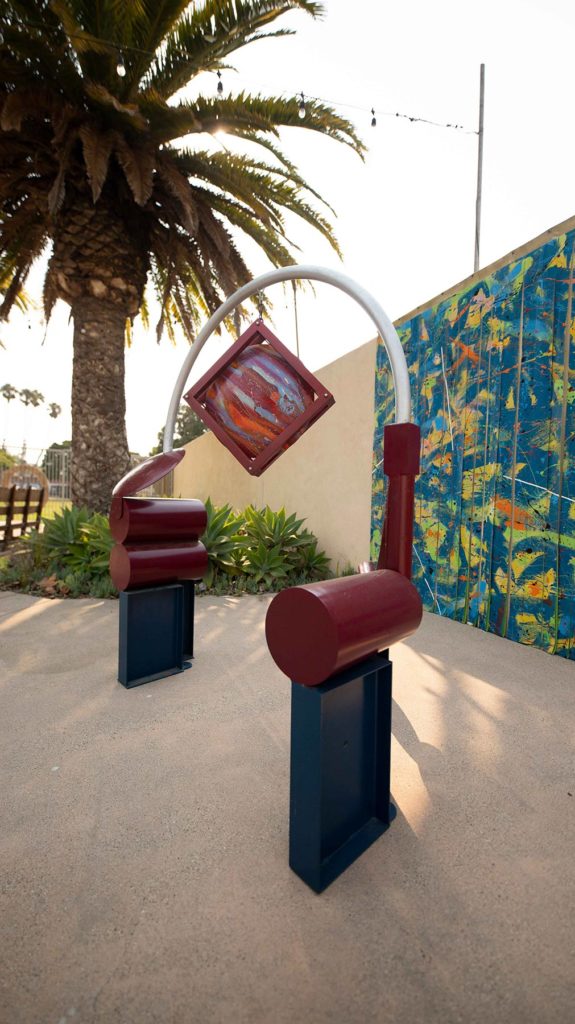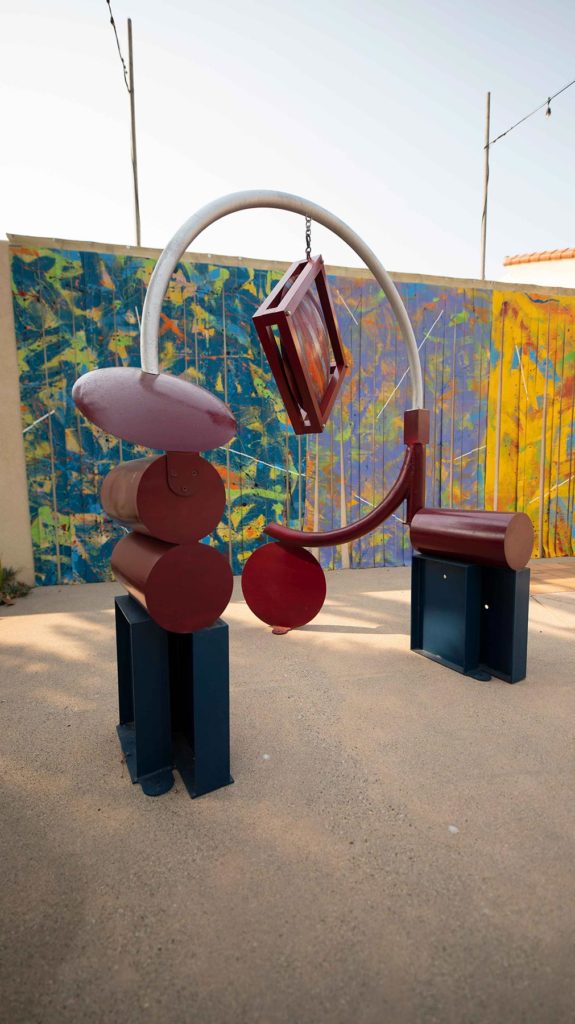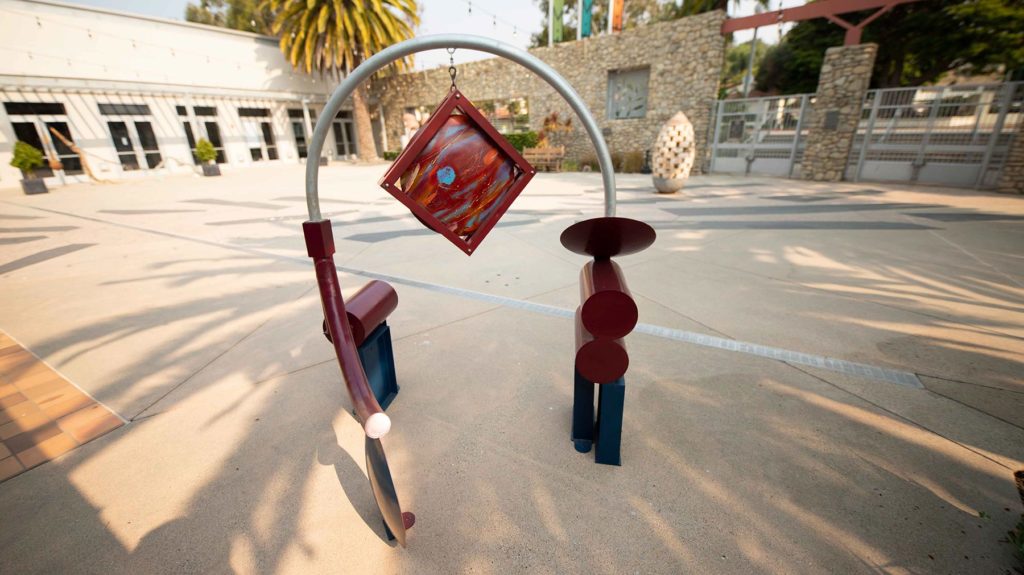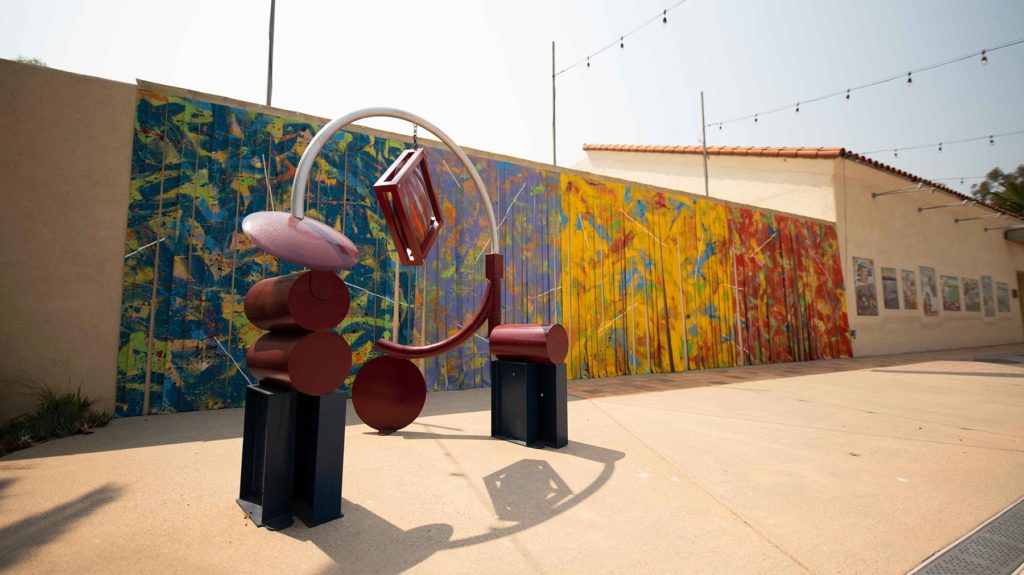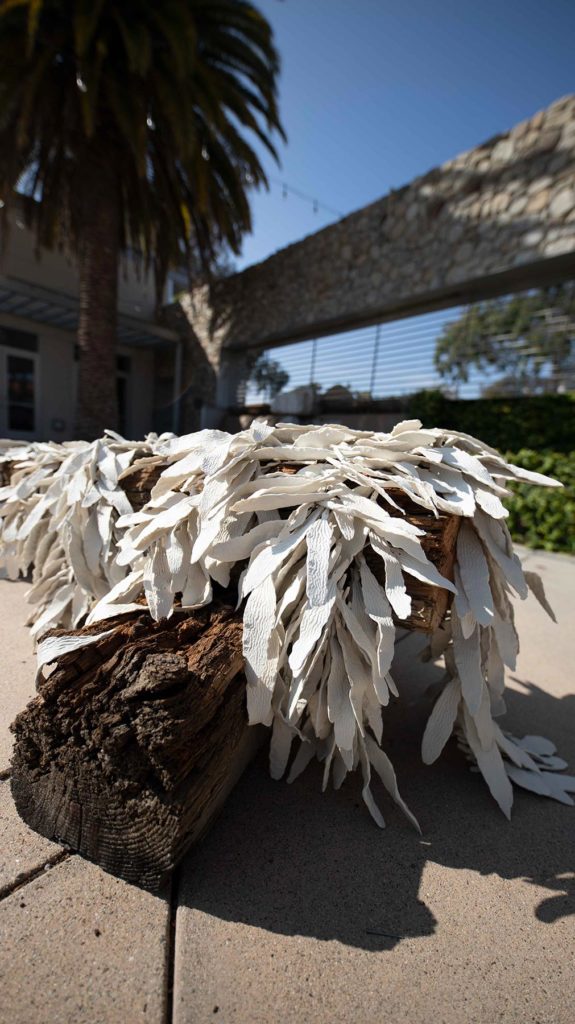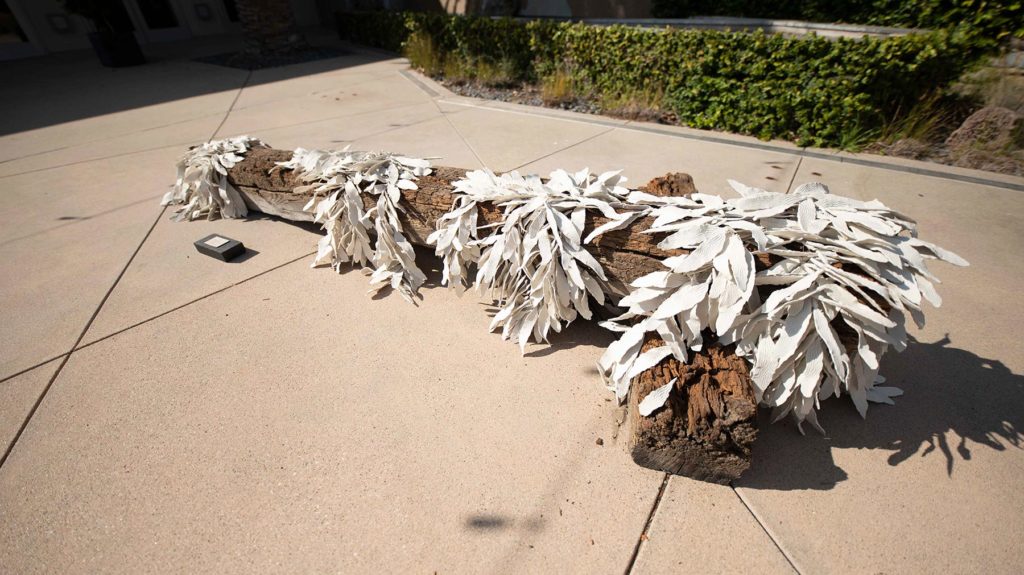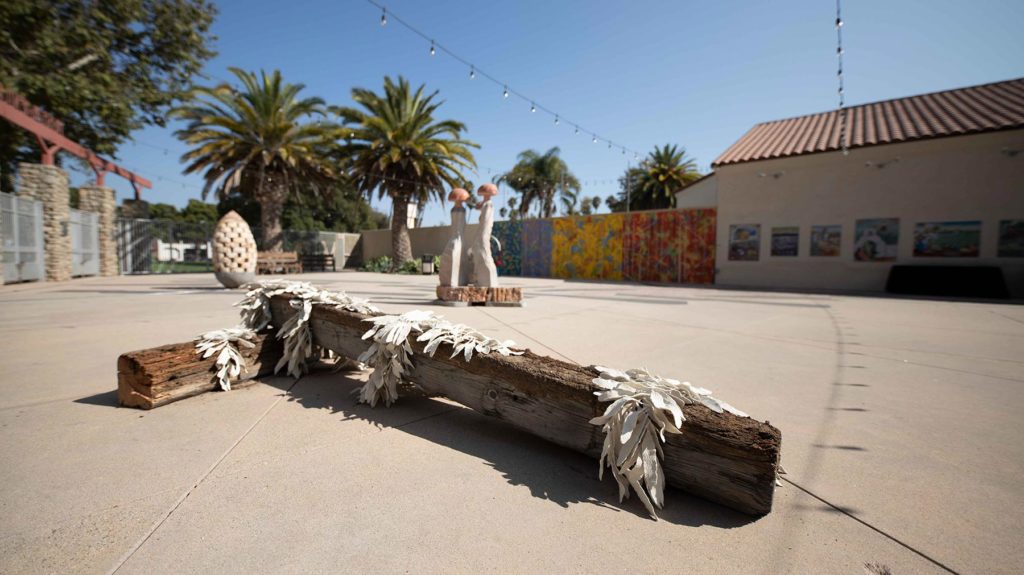The Museum of Ventura County (MVC) and the Ventura Botanical Gardens (VBG) was thrilled to host 14 regional artists in their first collaboration, Arte Forastero, from August—November 2020. Sculptures and installation works were installed in the Botanical Gardens nursery and lower trails, and in the Museum’s outdoor Plaza along Main Street in Downtown Ventura.
Arte Forastero showcased works by the following artists: Emma Akmakdjian, Gloria Bradley, Paul Lindhard and Kevin Carman, BiJan Fan, Wrona Gall, Sooz Glazebrook, Carlos Grasso, Bob Privitt, Sudad Shahin. Additional works by artists Tanya Kovalesky, Marianne McGrath, Carole Shaw Sutton and Amy Sharp will be installed in mid-September.
This collaboration was initiated by VBG Executive Director Joseph Cahill and MVC Deputy Director Denise Sindelar in recognition that the Gardens and the Museum’s outdoor Plaza would provide an excellent venue for the community to safely explore and experience outdoor art installations. Jurors selecting the exhibiting artists included Christine Beirne, Ojai Studio Artists, Barbara Brown, Board Member VBG, Matthew Furmanski, Professor CSUCI, Michael Pearce, Professor CLU, Peter Tyas, Executive Director Studio Channel Islands and Denise Sindelar, Deputy Director MVC.
The funding to support the art installations was provided by the Bonita C. McFarland Endowment through the Museum of Ventura County. All art sales will 100% benefit the exhibiting artists. Patrons interested in purchasing works may contact Denise Sindelar at dsindelar@venturamuseum.org.
Nereocystis
Emma Akmakdjian
My creative research draws comparisons between systems, primarily the body and the environment, to understand how we personify place and develop identity through our interactions with non-human nature.
My artworks use discarded artifacts that include old fishing ropes, nets, tires, and plastics, which I harvest from the landscape. I investigate the sequestration of natural resources and the interwoven dynamics of globalized ocean economics that permeate our daily customs. These projects take shape in videos, performances, and woven installations that re-evaluate our everyday habits of cooking, fishing, cleaning, weaving, and the subsequent roles we play inside various ecosystems.
Observing how American Indian cultures co-exist with nature inspires my inquiry of how other contemporary cultures create a divide between human and non-human nature. I juxtapose these environmental epistemologies in my woven installation “Anthropocene Kelp Forest,” which mediates between the data of a marine debris researcher and a kelp forest biologist who study the aquatic ecosystem of the California Channel Islands. Each slender “Kelp blade” is woven with fraying nylon ropes that I collect during beach clean-ups with scientists on Santa Rosa Island.
My use of reclaimed lobster rope in subsequent sculptures “Nereocystis” and “Split cyst,” alludes to the decline in overfished Spiny California Lobster. This creature helps maintain biodiversity in the kelp forests.
Without keynote species such as spiny lobsters or abalone, an opportunistic spike in sea urchin populations decimate entire forests and consequently affect seafood supply and ocean ecologies. I create these woven sculptures to immerse viewers in an aquatic environment that may otherwise be left unseen. In the act of putting people into the Kelp Forest, I hope to ignite relationships between human culture and algae. My installation art acts as a bridge between scientific data, history of natural resource usage, and interdisciplinary perspectives to foster a holistic dialogue of human conditions, expressed culture, adaptation, and Oceanic climate crisis.
The Hare
Gloria Bradley
Nuclear Family
Paul Lindhard and Kevin Carman
Zen Tea and Fogcather
BiJian Fan
BiJian Fan was born in Beijing, China, where he learned paper art from his grandmother. Today, BiJian resides in Camarillo, California, still creates cutting-edge paper sculpture to carry on the tradition, but his media have expanded to metal, polymer, and other materials.
BiJian is a multi-cultural and inter-disciplinary breed. He studied in China, Japan, and the USA, earned his BS and MS in Mathematics, and Ph.D. in Mechanical Engineering. After accomplishing a career in biopharmaceutical research and development, BiJian moved on to visual art and education. He combines science and art, explores aesthetic and physical properties of various materials, transforms 2D static material into 3D kinetic sculptures. His spatial and temporal transformation represents an evolution in space and time. Through visual art, BiJian found his voice.
BiJian has exhibited internationally and earned numerous recognitions. He exhibited in his home town for Beijing Olympics. His artwork has been featured by Smithsonian, Channel Islands National Park, McDonald’s, City of Los Angeles, Los Angeles Dodgers, Yahoo!, and other online media in more than 20 countries. BiJian’s local recognition included artist spotlight by Focus on the Masters, featured artist of 2009 Ventura Artwalk and 2012 Moorpark Arts Festival. He currently teaches art-science integration at California State University Channel Islands.
The Where and The Why
Wrona Gall
Colorspace Plaza
Carlos Grasso
“Colorspace Plaza is a note of color in a quite monochrome world these days.
Color is energy, vibrant waves captured by a hungry eye for purpose and meaning.
Color is hope, uplifting visual poem…
No better way to express the changing nature of life with moving shapes and forms.
Art is color, life is color, art IS life.”
Fire Shrine
Bob Privitt
With this sculpture, I wanted to pay homage to the quality of the sun and its seductive pull for some southern Californians. A copper-plated steel circle is sandwiched between two equilateral triangles fashioned from welded aluminum square stock. Brightly painted rectangular steel shapes, welded to the circle, point outward from the circle and away from the triangle, much like the sun’s rays.
Below, brightly painted circles, volumetric tubes, and spiraling pieces of steel support the structure.”
Embrace
Sudad Shahin
1949 – 2017
The artist’s bronze sculptures represent human experience through the sculptural manipulation of mass, space, and line. The work is based on a language of abstraction meant to provoke powerful associative possibilities between allegory and conceptual space. Physical elements of a composition are compressed to suggest linear massing that defines the edge between object and space. The reduction of forms into abstract representations creates visually fluid movements that actively engage the eye and mind in order to experience the entire object. The active exploration of the form and its subliminal cues allows construction of meaningful personal relationships between object and experience.
Artist Biography
Sudad Shahin was born in Baghdad, Iraq. He moved with his family to Southern California as a young child. He earned a Master of Architecture from the University of California, Los Angeles in 1982 and a Master of Fine Arts from California State University, Long Beach in 1994. He lived and worked in Venice, California for many years. Sudad enjoyed spending weekends in Ventura and valued our community as his second home. He planted more than 100 trees in Ventura. Sudad participated annually in the Venice Art Walk benefiting the Venice Family Clinic. He enjoyed having visitors to his studio and gallery. A highlight was hosting adult art students with vision impairment who experienced his sculptures during a field trip through the Braille Institute.
Sudad’s sculptures were created using lost-wax bronze casting.
Captured Semi-Sphere
Bob Privitt
“My desire with this sculpture was to raise on high a duality of geometric shapes—a union of a square and a circular semi-sphere. I wanted to create competent, admirably decisive work concerned with precarious balance and make a heavy material yield an airy-looking product. Thus, I stacked tubular shapes, circles, semi-spheres and rectangular ‘I’ beams into a support structure for a silver arc. Hanging from the arc is the union of square and circle.”
Untitled
Marianne McGrath


